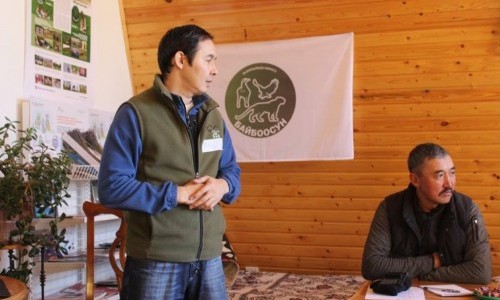
Specialists from the СAMР Alatoo РF conducted a survey among the residents of the Kalkagar and Kok-Sai villages in the Ton district of the Issyk-Kul region to identify the main sources of income for the local population. These villages are located within the territory of a project aimed at adapting migratory species to climate change, which is being implemented by СAMР Alatoo РF with the support of IKI-UNEP.
According to the survey results, 63% of respondents identified livestock farming as the primary source of income, while 55% pointed to agriculture and agricultural products. However, during data validation (verification) in a training session for local residents, it was revealed that in fact, 98% of the population rely on livestock breeding and sales for their main income, and only 35% benefit from agriculture.
The growth in livestock numbers is a key factor contributing to the intensive use of pastures and land degradation near the Kalkagar and Kok-Sai villages. To address these challenges, local resource users, representatives of local self-government bodies (LSG), and municipal enterprises participated in a training to enhance their knowledge on how to manage resources and prevent their degradation. During this session, the specialists from SAMR Alatoo clarified the survey data through direct engagement, revealing some discrepancies, and providing a more accurate picture based on objective data.
The survey results confirm official statistics, which show a consistent increase in livestock numbers in the country. According to the latest data from the National Statistical Committee, by the end of last year, the cattle population exceeded 1.8 million heads, while the population of small ruminants reached approximately 6.213 million heads, with an increase of more than 10% for both species. In the Issyk-Kul region, the cattle population grew by nearly 2% over the year.
The seminar participants completed practical exercises using the L4S module "Sustainable Pasture Management." As part of the exercises, they converted different types of livestock into "conditional heads." The moderators emphasized the importance of collecting reliable data on livestock numbers from various sources, such as statistical services and veterinary organizations. Exercises on assessing pasture capacity showed that the current load on pastures is already significant and will continue to increase with the growing livestock population. The analysis of fodder production revealed that the amount of feed grown locally is insufficient to support all the animals in the villages.
For sustainable pasture management, it is crucial to maintain a balance between three key factors: pasture capacity, livestock numbers, and fodder production.
The results of the seminar will serve as a foundation for further planning and the development of measures aimed at sustainable pasture and resource management in mountainous areas.



Итоги пастбищного сезона 2018 года были подведены на очередном заседании районной пастбищной комиссии (РПК).
MoreThe development of the unified method, "Monitoring Pastures at the Local Level," is nearing completion.
MoreЧетыре новых моста построены в 2018 году в Кыргызстане при поддержке ОФ “CAMP Алатоо” и Швейцарской ассоциации “Памирские...
More